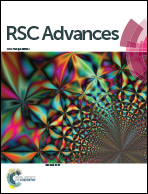Sol–gel synthesis of nanosilica-coated para-aramid fibers and their application in the preparation of paper-based friction materials
Abstract
A facile method of surface modification to fabricate nanosilica-coated aramid fibers via sol–gel process was studied and their application in the preparation of paper-based friction materials by wet-forming process was also investigated. SEM and EDS results showed that a dense coating of SiO2 nanoparticles was well established on the surface of aramid chopped fibers (ACFs). FT-IR characterization confirmed the formation of Si–O–C chemical bonds between SiO2 and ACFs. In comparison with the control sample (paper-based friction material containing pristine ACFs), the dynamic friction coefficient of the modified sample (paper-based friction material containing modified ACFs) gradually reached a steady state as a function of time. The wear rate of the modified sample was lower (30%) than that of the control sample. The SEM micrographs of worn surfaces supported the notion that the degree of wear of the control sample was more serious compared to the modified sample. It was concluded that the nanosilica-coated ACF-containing friction materials had excellent friction properties and wear resistance.



 Please wait while we load your content...
Please wait while we load your content...